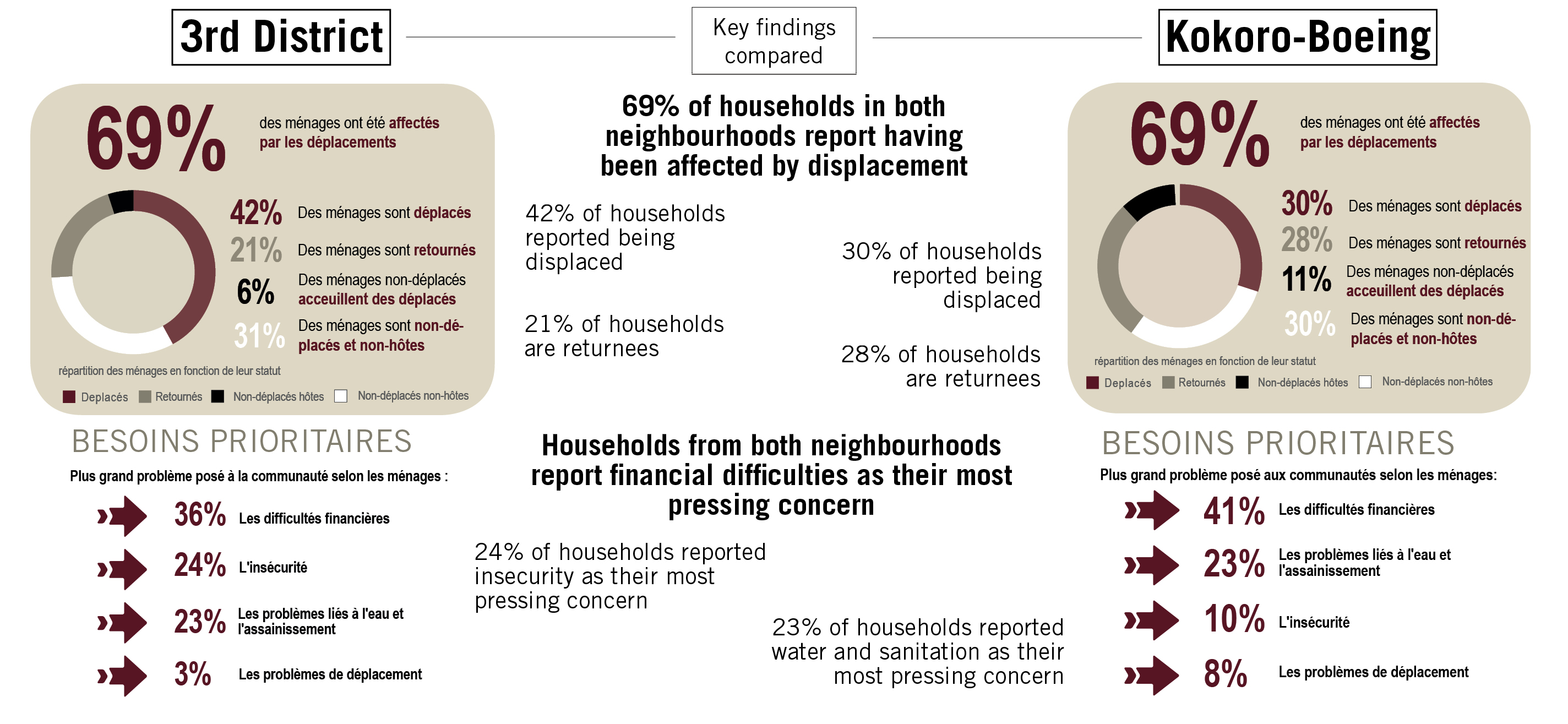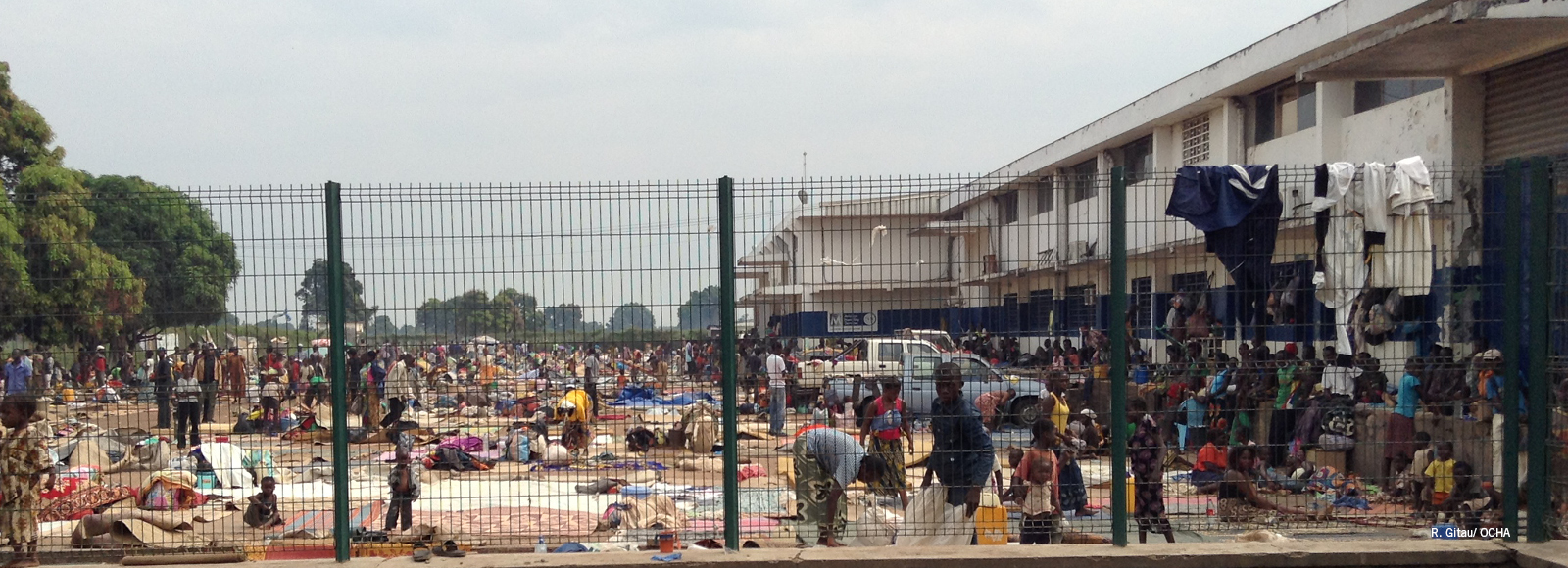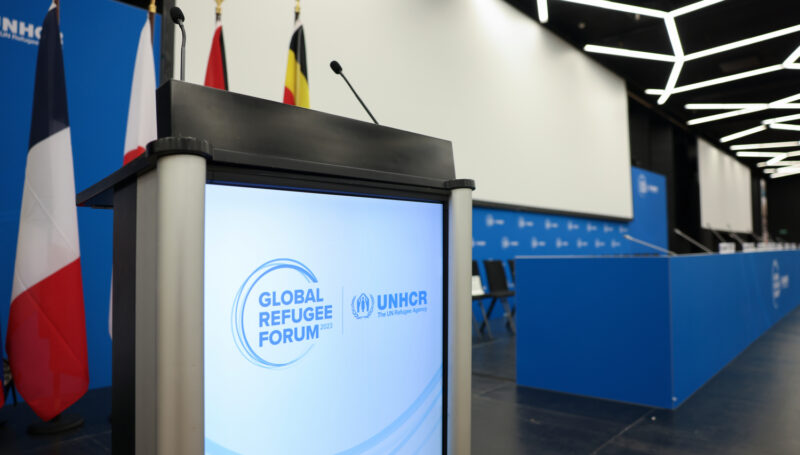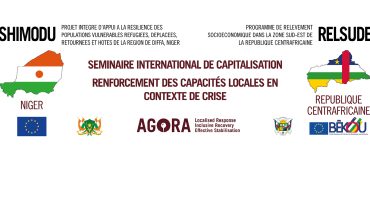Bangui, the capital city of the Central African Republic, is slowly emerging from the onset of a major crisis sparked in 2013 by the ousting of president François Bozizé. The eruption of violence in the city forced over 100,000 people from their homes and this sudden population movement severely disrupted basic service networks, adding more pressure on the already strained capacities of neighbourhoods. Seven years after the beginning of the crisis, IMPACT and ACTED, working via their joint AGORA initiative, continue to support the municipality of Bangui. The goal: to better understand how the city has been impacted by the crisis and how local actors can define and lead recovery response.
Multiple waves of displacement have taken place in the Central African Republic (CAR) since 2013 as a result of conflict and widespread violence. The past years have seen humanitarian needs mount, with a significant number of displaced populations unable to return to their neighbourhoods. Faced with this reality, support to return, stabilization and local development stands at the core of the country’s recovery strategy.
Even though the peak of the conflict has subsided, the displacement situation in the capital remains largely unresolved. The protracted nature of displacement has highlighted the urgent need for action, especially in neighbourhoods that have taken the brunt of displacement.
AGORA was established to support the stabilization and recovery of crisis-affected areas by promoting synergies between international and local actors. In Bangui, the AGORA initiative was deployed in the framework of its “Supporting Returns” project, concerned with the return of displaced populations in their home neighbourhoods. The goal of the project is to co-construct, alongside relevant national actors, a shared understanding of the local needs and accordingly draw a plan for recovery.
In doing so, AGORA focused on two neighbourhoods that were particularly affected by displacement. The first one, Bangui’s 3rd district, was impacted by the violence and ensuing destruction that led to the displacement of a large part of its population. The second assessed area, neighbouring Kokoro-Boeing, has faced and continues to see significant arrivals of internally displaced persons.
Assessing needs, step one towards recovery
The first step of the project was to conduct an assessment covering all humanitarian sectors. The assessment provided an in-depth understanding of how the years of instability have impacted the neighbourhoods, as well as the capacities of local service providers. Combining qualitative and quantitative research based on a mixed methods approach, the collected data aimed to measure the needs, at household level, of populations in both neighbourhoods.
Data from the initial assessment uncovered urgent discrepancies between the supply and demand of basic goods and services, as well as striking disparities between the two neighbouring areas.
For instance, the primary concern for communities in Kokoro-Boeing was unreliable access to water. In the 3rd district however, where water systems have historically been better connected, populations reported the lack of livelihood opportunities and reigning insecurity as their major concerns.
Regardless of these differences, both neighbourhoods still suffer from the effects of the violence with seven out of ten households reporting being affected by displacement.
In spite of apparent challenges, local communities and their representatives are well aware of the potential for development in their neighbourhoods. For instance, Kokoro-Boeing is continuously expanding its housing market by capitalizing on the many hectares of fertile land fit for urban agriculture, whilst the 3rd district harbours the most attractive and lively marketplace in the country.
Both neighbourhoods are further characterized by their young and dynamic population, combined with an active network of local organizations. The transformation of these existing opportunities and residing strengths into concrete avenues for development requires strong coordination between municipal actors and their humanitarian counterparts.

Key findings extracted from the reports on the 3rd District and Kokoro-Boeing show the extent to which displacement is a central issue for residents.
Joining forces with local authorities
The initiative thus enabled a collaborative process by leading stakeholders ̶ including local authorities, institutional actors, service providers, sectoral ministries and development partners ̶ to collectively reflect on local priorities for recovery and development. These reflections were based on the assessment’s findings and in turn enabled the elaboration of concrete responses to the sectoral needs. The action points were then compiled into recovery plans that aim to guide short, medium and long-term interventions in the two areas.
An example of the drawn plans was the proposal regarding water distribution issues in the 3rd district, where reparations until now had been impossible for security reasons. The recovery plan suggested the creation of a local mediation system to facilitate access to the district despite the presence of armed groups.
Also, to leverage on the economic potential for agriculture in Kokoro-Boeing, local economic and municipal actors suggested promoting this sector within circles of the young population seeking self-entrepreneurship opportunities.
Among the other recommendations detailed in the local recovery plans are a set of initiatives which aim at bolstering the local economy via local associations for professional training programs. One of these is the local Savings and Loans Association which aims to support communities in managing their resources.
From evidence to local planning
AGORA also reinforced the capacity of local actors to collaborate on the realization, monitoring and outward engagement related to the newly issued local recovery plans. Local municipal authorities and representatives from the civil society took part in training programmes which helped them to understand how community-based initiatives and public constituencies can better collaborate and contribute to local development.
The significance of the multi-faceted work was recently cited in a Le Monde article detailing the recovery efforts in Bangui – with an emphasis on the 3rd district. The need for development is clear, but so is the significance of stability. All in all, by gathering decision-makers from local authorities, humanitarian responders and the community, the initiative demonstrated how evidence and collaboration can yield paths for concrete, constructive action.
To learn more about the project and the published recovery plans have a look at:
- Recovery Plan for the 3rd district
- Recovery Plan for Kokoro-Boeing
Please note that the reports are in French.
Opening picture courtesy from OCHA/R.Gitau









